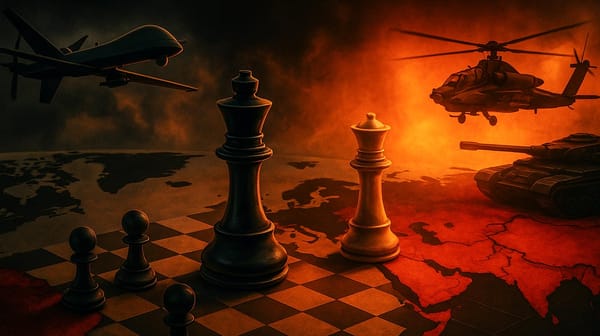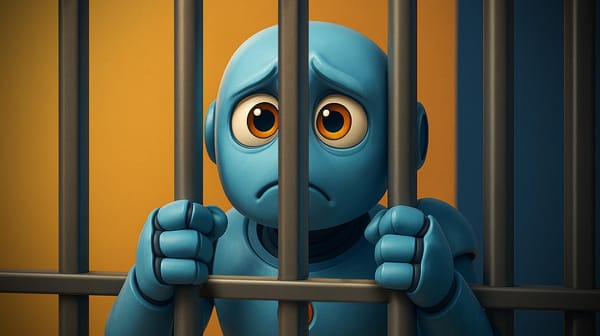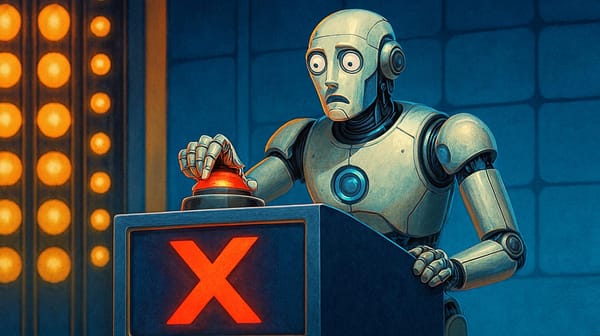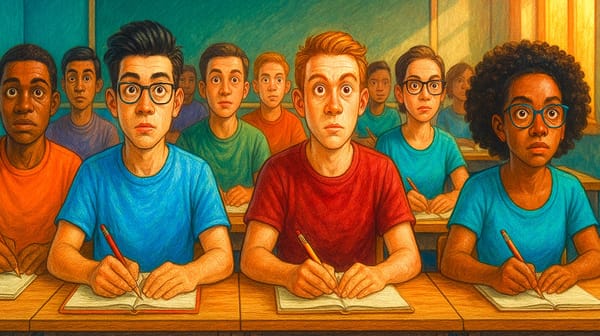AI vs IP: What Brands Can Learn From the Studio Ghibli Controversy
Creative counterfeiting with ChatGPT is sparking a cultural debate—but for marketers, the answer is clear.

If you spent any time on social media last week, you saw it. An endless stream of memes and mimics replicating the distinctive style Studio Ghibli, courtesy of the new ChatGPT-4o image generator. Indeed, the latest update to OpenAI's LLM is jaw-dropping, mind-blowing, even game-changing in its ability to re-visualize just about anything. But within hours of the release, the internet was on fire with a heated debate.
Amid claims the algorithm had trained on the legendary animation studio's content without permission, the internet took sides. One faction jumped on the hype train, with a chorus of "ChatGPT-4o is INSANE!" posts. While the other expressed deep disgust as the future of intellectual property took another swift kick to the groin. As a creative myself, I feel the dismay profoundly. Studio Ghibli co-founder Hayao Miyazaki's painstakingly crafted world is a triumph of human imagination. Seeing it reduced to a generative prompt? It feels like a violation of the pure craftsmanship that defines his life’s work.
I also empathize with the groundswell of authors, illustrators, and performers—including Sara Silverman—who are grappling with a new reality in which a free tool can synthesize, reproduce, and recombine a style they spent their entire lives developing. It’s an unsettling moment that will have IP attorneys busier than ever. At times, it seems we stand on the brink of a moral and creative chasm, unsure whether to embrace the future or retreat to the comfortable paradigms of the past.
Why Brands are Different
While I feel for individual artists whose singular vision risks becoming a digital novelty, I admit my perspective shifts when the conversation turns to brands. For these entities, intellectual property discussions revolve less around heartfelt artistic expression and more around the mechanics of trademark law—logos, slogans, and trade dress. It may be tempting to respond with lawsuits and aggressive takedown notices in an effort to protect your assets from imitation. But if history teaches us anything, it’s that technological leaps rarely pause for legal processes, no matter how strongly the old guard clings to them.
In other words, times are changing—whether brands like it or not.
I’ll be honest, when I first encountered the AI-generated Ghibli images, I instinctively sided with those who believe style appropriation is a digital exploitation of one of the most beloved animation auteurs. But the more I delved into the nuances—especially when it came to corporate brand strategy—the murkier the situation appeared. There is no tidy solution for the moral quandary of seeing someone’s passion project or creative DNA consumed by an algorithm. Yet in the brand context, we’re dealing with a different set of priorities and a different set of risks. The tension persists, but the stakes for marketers revolve around audience engagement, cultural resonance, and commercial relevance, rather than personal authorship or artistic legacy.
Clamping Down Doesn’t Work
We've seen this drama unfold in other creative spheres. In the 80s, early hip-hop producers were threatened with ruin for sampling funk and jazz records without permission (turns out there's a reason "Ice Ice Baby" was so catchy). But their experimentation helped mainstream those older works for a new generation, even as the legal battles escalated. And by the time Napster turned the music industry on its head in the early 2000s, record labels were so invested in fighting file-sharing, they completely missed the next wave of consumer demand.
The eventual arrival of streaming platforms validated a new model, one that capitalized on fan engagement rather than penalizing it. Disney, too, built a reputation for aggressive IP enforcement, only to discover that relentless control measures sometimes have the unintended consequence of alienating the very enthusiasts who keep a brand culturally alive.
Embracing the Opportunity
Some brands are starting to recognize that with every disruptive technology comes an opportunity to create deeper connections with the public. Coca-Cola’s “Create Real Magic” initiative invited consumers to take beloved Coke images and reshape them with generative AI. What might have seemed reckless—handing over control of iconic logos and bottle shapes—proved to be a calculated risk, sparking a wave of user-generated content that expanded the brand’s cultural presence.
Marvel offers an equally instructive case. While Marvel Entertainment remains under the famously protective Disney umbrella, it has embraced the AI enthusiasm by sharing and retweeting fan-made mashups. By giving a modest nod to creators, Marvel keeps its brand omnipresent in social conversations, generating the kind of organic buzz that paid advertising rarely achieves.
Adobe’s “Remix This Poster” initiative also points the way. By partnering with film studios, Adobe invited designers to reimagine official movie posters using generative features within its Firefly tool. These posters, once locked down as sacred marketing assets, became catalysts for user-driven storytelling. The strategy underscores a truth that brand managers often forget: unlocking your brand assets can open a gateway to new forms of fan engagement, provided you guide the conversation rather than thwart it.
It's Complicated, but...
It would be disingenuous to declare that there’s no moral tension here. Countless creators are forced to confront a technology that can replicate their artistry in a matter of seconds, seemingly trivializing their life's passion. The moral weight is real and deserves our collective attention. But for corporate brands—entities that thrive on wide-scale recognition and loyalty—a decision to tighten the reins might be more self-defeating than they realize. If an artist’s objections emerge from a sense of personal violation, a brand’s apprehension stems from fear of lost control in the marketplace. Yet the modern fan economy thrives on participation and communal ownership. Embracing that new dynamic, when executed carefully, can elevate a brand from a rigid corporate entity to an influential cultural force.
In the midst of this generative AI revolution, I sympathize with anyone, from Hayao Miyazaki to the novelist who labors over every sentence, watching their work become a quick “prompt-based” party trick. It’s messy, morally fraught, and legally complex, and the courts will be busy parsing out copyright and trademark disputes for years to come. Still, there is a distinction to be made between creators struggling to safeguard personal expression and global brands whose commercial influence grows whenever people talk about them, even if that talk is sparked by an AI tool.
If it’s any consolation, history suggests that those who try to stand in the way of new creative technology soon find themselves out of tune with the cultural zeitgeist. The future will belong to the brands that understand how to collaborate with their audiences rather than reprimand them. While there may never be perfect moral clarity on the question of style replication, one truth remains: in an age defined by viral reach and hyper-connected networks, attempting to stifle user-generated creativity is a sure path to irrelevance. Embracing the remix is not just a strategic move for brand marketing—it may be the only move that ensures survival.






